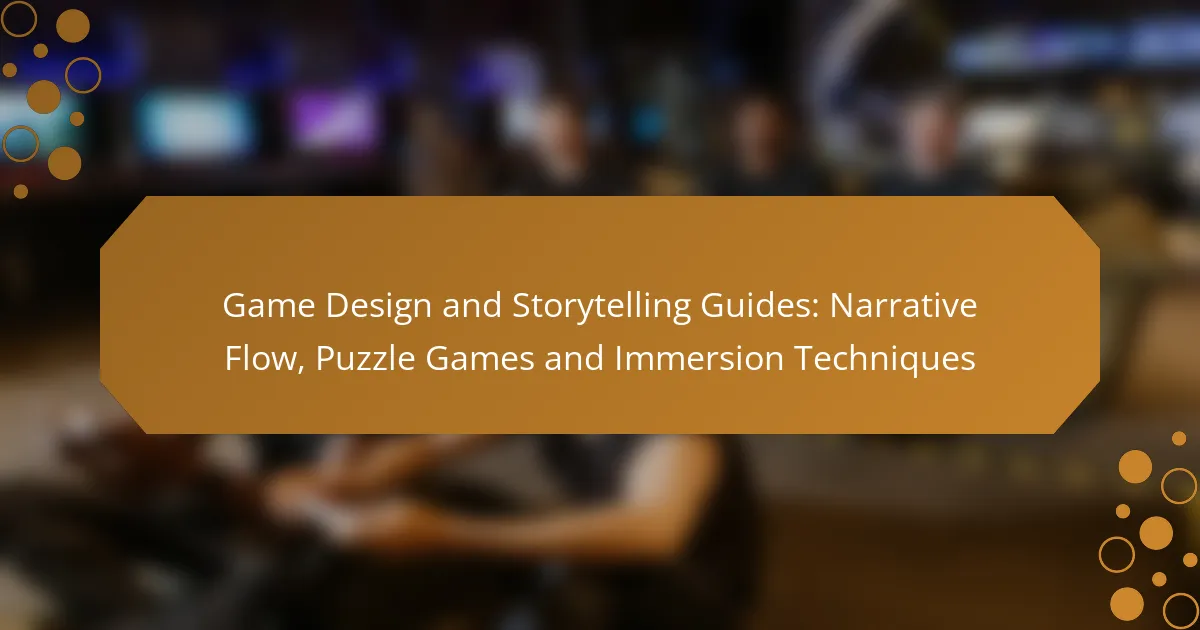Incorporating classic literature into game design can elevate narratives and deepen player engagement through complex characters and profound themes. By effectively adapting these timeless stories, designers can create immersive worlds that resonate with players while maintaining the integrity of the original narratives. This approach not only enhances gameplay but also fosters emotional connections, encouraging players to invest in their gaming experiences.

How can classic literature enhance game design?
Classic literature can significantly enhance game design by providing rich narratives, complex characters, and profound themes that resonate with players. Drawing from these timeless works allows designers to create immersive worlds and engaging storylines that elevate the gaming experience.
Character development techniques from Shakespeare
Shakespeare’s characters are renowned for their depth and complexity, often showcasing a range of emotions and motivations. Game designers can adopt techniques such as internal conflict, dynamic relationships, and moral ambiguity to create relatable and compelling characters. For example, a character torn between loyalty and ambition can drive player engagement through their choices.
Utilizing soliloquies or inner monologues can also help players understand a character’s thoughts and feelings, enhancing emotional investment. Consider incorporating dialogue options that reflect a character’s evolving personality, allowing players to influence their development throughout the game.
Thematic depth in Dostoevsky’s works
Dostoevsky’s literature explores profound themes such as morality, existentialism, and the human condition. Game designers can integrate these themes to provoke thought and encourage players to reflect on their choices. For instance, a storyline that challenges players to confront ethical dilemmas can create a more immersive and meaningful experience.
Incorporating philosophical questions into gameplay mechanics can deepen thematic engagement. Designers might create scenarios where players must weigh personal desires against societal expectations, prompting them to consider the implications of their actions within the game world.
World-building inspired by Tolkien
Tolkien’s world-building is characterized by intricate histories, languages, and cultures that create a sense of authenticity. Game designers can draw inspiration from his meticulous approach by developing detailed lore and backstories for their game worlds. This can include creating unique races, languages, and mythologies that enrich the player’s experience.
To effectively implement world-building, consider using environmental storytelling, where the game’s setting conveys history and culture through visual elements. Additionally, incorporating quests that reveal the world’s lore can engage players and encourage exploration, making the game feel more alive and interconnected.

What are effective adaptation techniques for games?
Effective adaptation techniques for games involve translating the essence of the original narrative while ensuring engagement and interactivity. Key methods include maintaining narrative structure, character integrity, and thematic depth to resonate with both new and existing audiences.
Translating narrative structure from novels
When adapting novels into games, it’s crucial to identify the core narrative structure, which often includes exposition, rising action, climax, and resolution. This structure can be transformed into gameplay mechanics, such as quests or missions that mirror the story’s progression.
Consider using branching narratives to allow player choices to influence outcomes, thus enhancing engagement. For example, in a mystery novel adaptation, players could choose different investigative paths that lead to various endings, reflecting the novel’s themes while providing a unique gaming experience.
Maintaining character integrity in adaptations
Character integrity is vital in adaptations to ensure that beloved figures retain their essence. This can be achieved by closely analyzing character motivations, traits, and arcs from the source material and translating them into gameplay through dialogue options and character development systems.
It’s important to avoid drastic changes that could alienate fans. For instance, if adapting a heroic character, maintain their core values and personality traits, even if their backstory is expanded or altered for gameplay purposes. Regular playtesting can help gauge whether characters resonate well with players.

How does storytelling impact player engagement?
Storytelling significantly enhances player engagement by creating immersive experiences that resonate emotionally. A well-crafted narrative draws players into the game world, encouraging them to invest time and effort into the gameplay.
Emotional connection through narrative
Emotional connection is vital for player engagement, as it fosters a sense of investment in the characters and plot. When players relate to a character’s struggles or triumphs, they are more likely to feel compelled to continue playing. Games like “The Last of Us” exemplify this, where players form deep attachments to the characters through rich storytelling.
To cultivate emotional connections, consider incorporating relatable themes such as loss, friendship, or redemption. Use dialogue and character development to evoke empathy, allowing players to see parts of themselves in the narrative. This approach can significantly enhance their overall gaming experience.
Player agency in story-driven games
Player agency refers to the ability of players to influence the narrative through their choices, which can greatly enhance engagement. When players feel their decisions impact the story’s outcome, they are more likely to remain invested in the game. Titles like “Detroit: Become Human” showcase how branching narratives can create a sense of ownership over the story.
To effectively implement player agency, design multiple pathways and endings based on player choices. Ensure that decisions have meaningful consequences, which can range from minor character interactions to major plot shifts. This not only enriches the narrative depth but also encourages replayability, as players may want to explore different outcomes.

What frameworks exist for integrating narrative depth?
Integrating narrative depth in game design involves structured approaches that enhance storytelling and player engagement. Frameworks such as story arcs and character backstory integration methods provide essential tools for creating immersive experiences.
Story arcs and player choices
Story arcs are essential for guiding the narrative flow while allowing player choices to shape outcomes. A well-defined arc typically includes exposition, rising action, climax, falling action, and resolution. By incorporating branching paths, players can influence the story, leading to multiple endings or character developments.
Consider using a three-act structure to balance narrative pacing with player agency. For instance, in an RPG, the first act could introduce characters and conflicts, the second act could present challenges based on player decisions, and the third act could resolve the story differently depending on those choices. This structure keeps players engaged and invested in the narrative.
Character backstory integration methods
Integrating character backstories into gameplay enriches the narrative and fosters emotional connections. One effective method is to reveal backstory through environmental storytelling, such as items or locations that hint at a character’s past. This allows players to discover lore organically as they explore.
Another approach is to use dialogue options that reference a character’s history, enabling players to engage with the narrative on a deeper level. For example, a character might react differently to situations based on their past experiences, which can affect player interactions and choices. Aim to weave these elements seamlessly into the gameplay to enhance immersion.

What are the best practices for writing game narratives?
Effective game narratives engage players and enhance their experience through immersive storytelling. Best practices include understanding the audience, creating relatable characters, and ensuring that the narrative complements gameplay mechanics.
Collaborative writing processes
Collaborative writing involves multiple writers working together to develop a cohesive narrative. This approach fosters diverse perspectives and ideas, which can lead to richer storylines. Regular brainstorming sessions and shared documents can help maintain alignment among team members.
Utilizing tools like Google Docs or Trello can streamline collaboration, allowing for real-time feedback and organization of ideas. Establishing clear roles within the team can also enhance productivity and ensure that each writer contributes effectively to the narrative development.
Iterative feedback loops in narrative design
Iterative feedback loops are essential for refining game narratives. By regularly testing narrative elements with players and gathering their input, designers can identify what resonates and what falls flat. This process often involves multiple rounds of playtesting and revisions.
To implement effective feedback loops, set specific milestones for narrative reviews and encourage open communication among team members. Consider using surveys or focus groups to gather player insights, and be prepared to adapt the narrative based on this feedback to improve player engagement.

How can digital products support game storytelling?
Digital products enhance game storytelling by providing interactive and immersive experiences that engage players on multiple levels. These tools allow creators to weave complex narratives, enabling players to influence outcomes and explore rich storylines.
Interactive storytelling tools like Twine
Twine is a popular tool for creating interactive narratives, allowing designers to craft branching story paths easily. Users can build stories that respond to player choices, offering a unique experience each time. This flexibility makes it ideal for both novice and experienced storytellers looking to experiment with narrative structures.
When using Twine, consider the flow of your story. Ensure that choices are meaningful and lead to different outcomes, which keeps players engaged. Avoid overwhelming players with too many options at once; instead, introduce choices gradually to maintain narrative clarity.
Game design software with narrative features
Many game design platforms, such as Unity and Unreal Engine, incorporate narrative features that support storytelling. These tools allow developers to integrate dialogue systems, cutscenes, and environmental storytelling seamlessly. Utilizing these features can enhance the emotional depth and immersion of the game.
When selecting software, evaluate its narrative capabilities against your project needs. Look for tools that offer robust scripting options and user-friendly interfaces. Additionally, consider the community support and available resources, as these can significantly impact your development process.

What emerging trends are shaping game storytelling?
Emerging trends in game storytelling are increasingly driven by technology and cross-platform narratives. Innovations like AI and multi-channel storytelling are transforming how narratives are crafted and experienced, enhancing player engagement and immersion.
Use of AI in narrative generation
AI is revolutionizing narrative generation by enabling dynamic storytelling that adapts to player choices. This technology can create branching storylines, generate dialogue, and even develop character arcs in real-time, offering a personalized experience.
When implementing AI in storytelling, consider the balance between scripted content and generated elements. Too much randomness can lead to incoherence, while too little can stifle creativity. A hybrid approach often yields the best results, allowing for both structured narratives and spontaneous developments.
Cross-media storytelling strategies
Cross-media storytelling involves integrating narratives across various platforms, such as games, films, and books, to create a cohesive universe. This strategy enhances engagement by allowing players to explore different facets of a story through their preferred medium.
To effectively use cross-media strategies, ensure that each medium complements the others. For example, a game could expand on a film’s storyline, while a book might delve into a character’s backstory. Consistency in tone and themes across all platforms is crucial for maintaining audience immersion.



